Capture spectacular starry scenes without blur.
High-quality starry sky shots are impossible without proper frame stabilization, which means you need the best tripod for astrophotography to achieve this.
The most important conditions for capturing a beautiful starry sky are shooting long exposure photos and sufficient magnification, which can be provided by the stable tripod.
I advise you to pay attention to size, weight, cost, stability, and other parameters similar to the requirements for tripods for landscape photography.
You can invest $30-40, but professional models can cost more, up to $300-400.
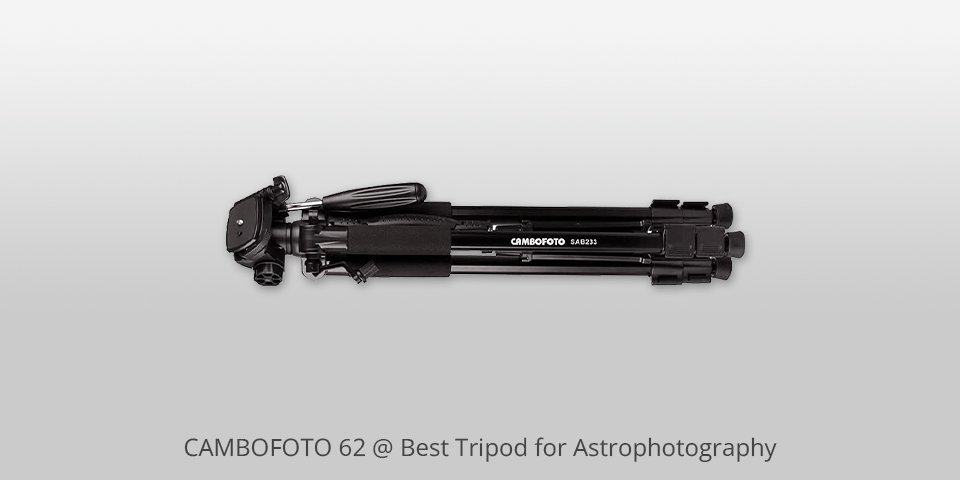
Type: Photo | Head Type: Ball | Max Height: 62 inches | Weight Capacity: 2.76 lbs
This astrophotography tripod is ideal for travelers and wildlife photographers and will be your trusted companion when capturing the starry sky. Its stability deserves special praise, as neither strong wind nor uneven ground will be a problem for it.
For those looking for a tripod under 50 dollars, the CAMBOFOTO 62 is a great find.
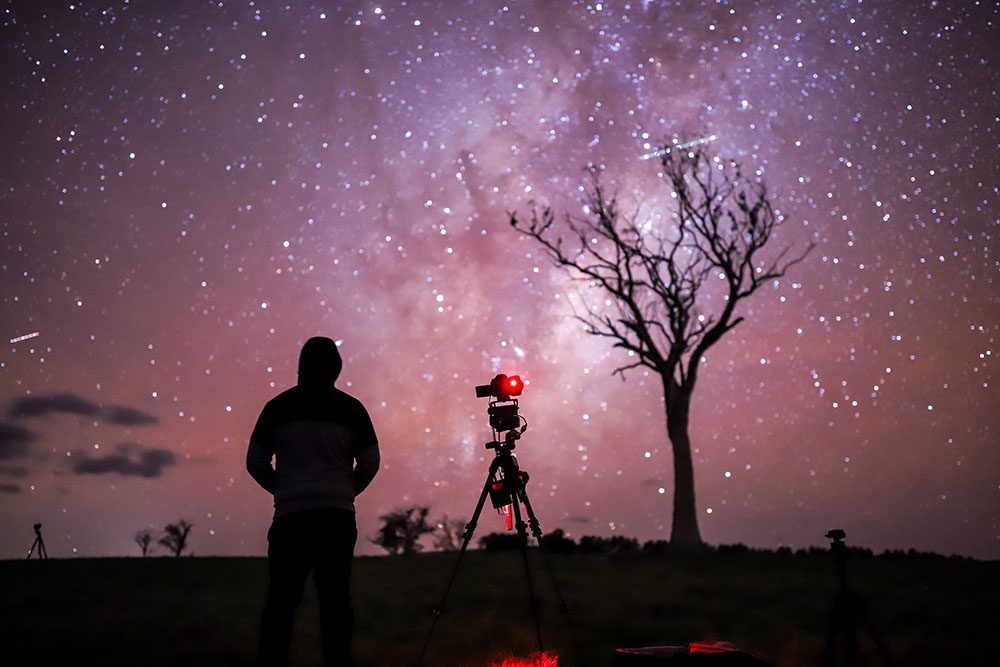
Taken with CAMBOFOTO 62
This tripod is quite heavy, but it still remains easy to transport. It comes with a spirit level, a 3-point adjustment control design, and a quick-release plate.
This plate is fitted with reliable clips, rubber legs, and double protection locks for the monitor or camera for astrophotography.
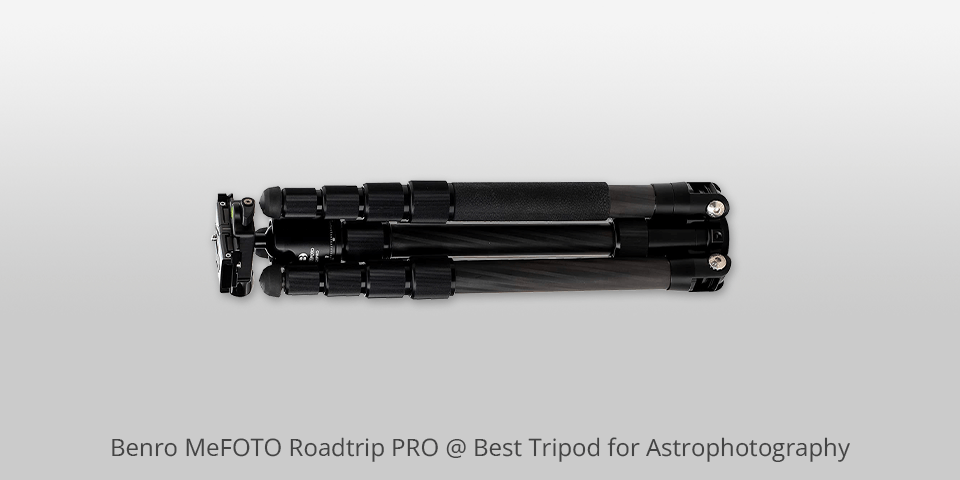
Type: Photo | Head Type: Dual-action ball | Max Height: 22 inches | Weight Capacity: 17.6 lbs
The MeFOTO Roadtrip PRO is the perfect tripod for heavy lenses and cameras, which are commonly used to capture celestial bodies and astronomical phenomena. What’s more, it can support the weight of rather heavy telescopes for astrophotography.
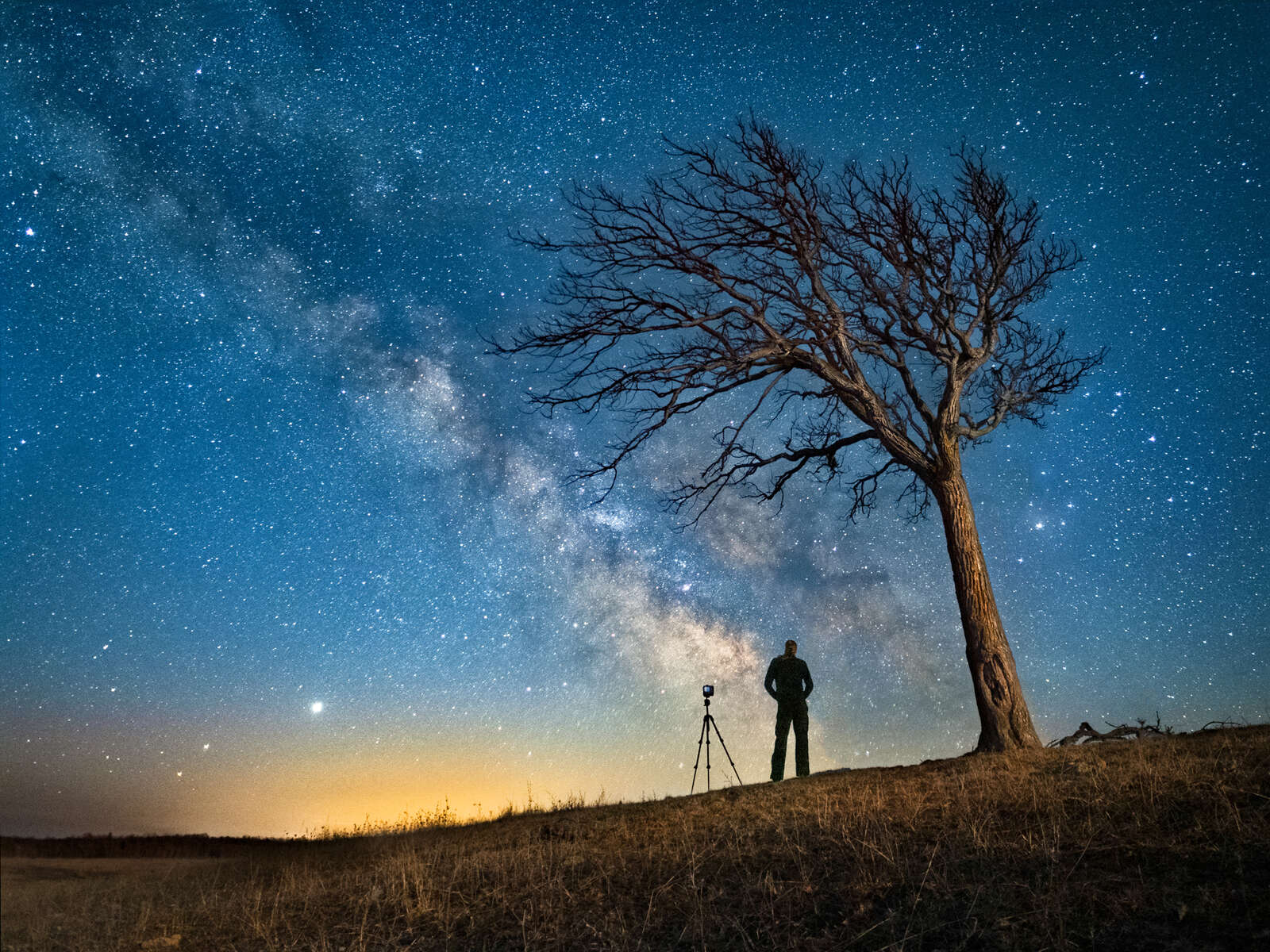
Taken with Benro MeFOTO Roadtrip PRO
The head rotates 360 degrees, allowing the photographer to take any angle for shooting. You can also use it as a monopod with a single leg for its full size. This is very convenient as it frees you from choosing tripod vs monopod.
It is highly stable, and its dual-action ball head provides a comfortable shooting experience in challenging environments, making it the best tripod for astrophotography.
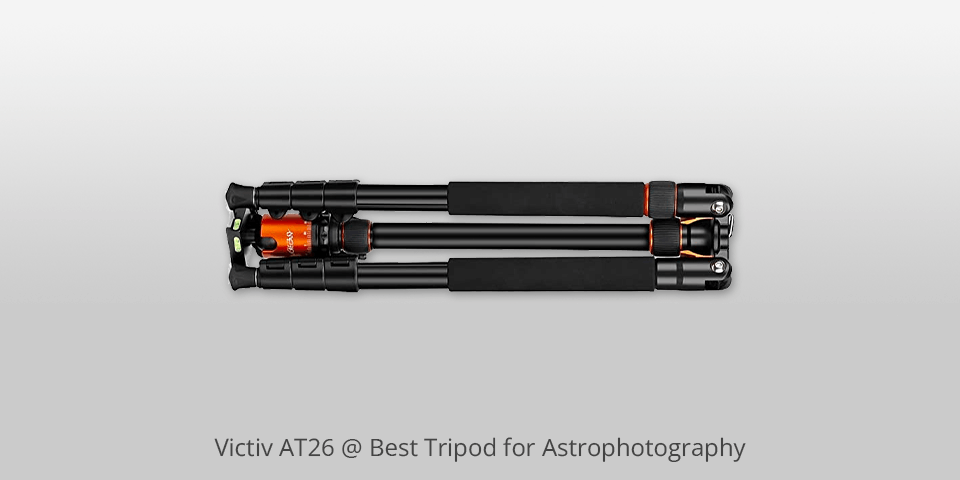
Resolution: 1920x1200 | Contrast Ratio: 4,000:1 | Brightness (Lumens): 5800 | Screen size: 40" - 600"
The Victiv AT26 is an astronomy tripod that can be set for a minimum height of 7.8" to a maximum height of 78" with the column fully raised. Thanks to its aluminum-leg construction, the tripod is lightweight and durable.
It features an all-metal 36mm ball head for better stability and a larger ball head for higher tightness. This heavy duty tripod for astrophotography protects your camera at the highest level.

Taken with Victiv AT26
What’s more, this photo accessory provides more flexibility while shooting steadily. Victiv AT26 is very convenient to carry since it comes with a carrying case.
It’s an affordable price for the quality it offers amateurs and professionals in night photography alike.
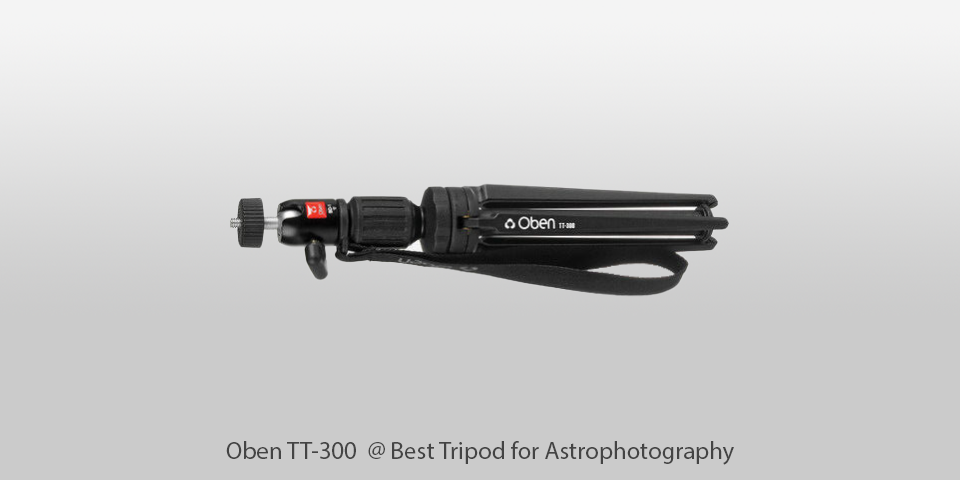
Type: Photo | Head Type: Ball | Max Height: 11 inches| Weight Capacity: 6 lbs
On the lookout for a solid tripod for snapping the stars, the Oben TT-300 caught my eye. It's tough with its aluminum build, and it takes the unpredictability of outdoor stargazing in stride.
Handling up to 6 pounds of gear, it gives me a sturdy base for capturing those dreamy cosmic landscapes.
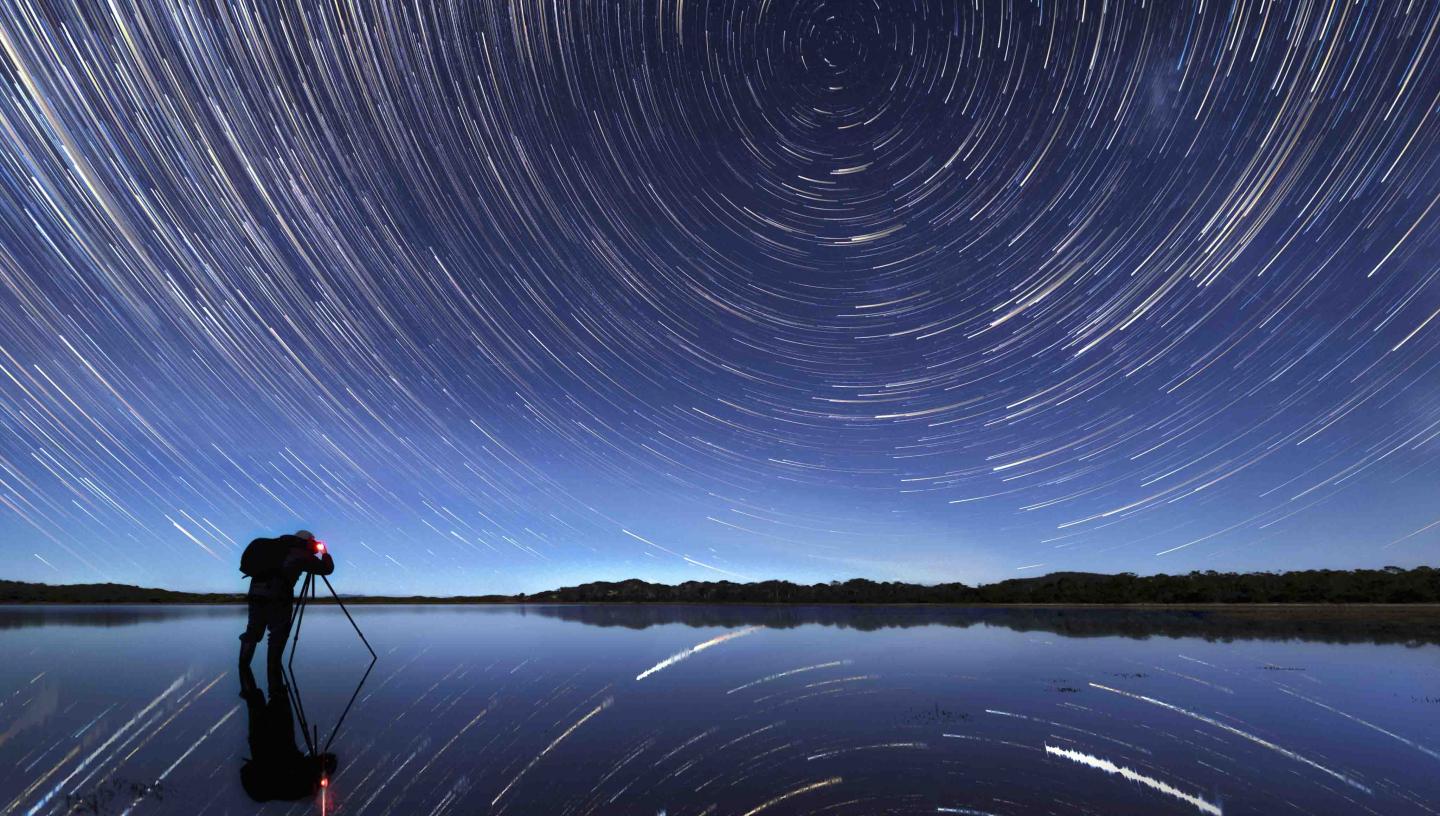
Taken with Oben TT-300
An adjustable center column is like a little telescope that will let me explore different angles at heights from 12 to 17 inches. The mini ball head pans 360 degrees smoothly, emulating the motion of the stars, and tilts 90 degrees to infuse a bit of creativity in the photo-taking activity.

Type: Video | Head Type: Fluid | Max Height: 62 inches| Weight Capacity: 17.6lbs
The Neewer 62 features a quick leg locking mechanism providing more convenient leg handling. This mini tripod boasts high-efficiency shock absorption, great heat and corrosion resistance.
Thanks to the newest damping tension knob design, you can set the damping strength easily. If you are new to astrophotography, then this is your best tripod for telescope.

Taken with Neewer 62
This astronomy tripod has a universal ball-head design with 2 locks and a 360-degree dial making adjusting the angle a no-brainer task. This flexible tripod boasts high performance and decent photo quality when cropping large images.
| IMAGE | NAME | FEATURES | |
|---|---|---|---|

|
CAMBOFOTO 62
OUR CHOICE
|
CHECK PRICE → | |

|
Benro MeFOTO Roadtrip PRO
UNIVERSAL
|
CHECK PRICE → | |

|
Victiv AT26
STABLE
|
CHECK PRICE → |
Apart from the tripod brand, personal preference, and pricing, there are several important features to consider when choosing the best tripod for astrophotography.
Max payload weight – 15 lbs. Payload capacity of the good tripod varies from 4.4 to 28 lbs. It depends on the build quality, type, and size of the tripod. Thus, if you need a compact, easy-portable model like most travel tripods, don’t expect it to have a high weight capacity. If the payload weight is essential for you, be ready to carry a larger tripod with extra weight.

Material - aluminum. The best tripod for telescope should balance small weight and durability. That is why your tripod should be made of aluminum or carbon fiber. These materials are not heavy and can handle a substantial amount of weight.
What’s more, they are resistant to corrosion. If you want a budget tripod, pay attention to aluminum tripods. In case you can afford more expensive equipment, get a carbon fiber tripod since it is lighter and sturdier.

Versatility – 360-degree. The more versatile tripod you get, the better. You should be able to shoot from just about any angle to capture objects directly in the sky and those near the horizon. A good tripod for astrophotography should feature a 360-degree ball head that allows panning a camera around.
What’s more, a vertical column will also add versatility to your accessory. However, this feature is typical for mid-range and high-end Manfrotto tripods as well as Benro models. This column converts from a conventional horizontal to a vertical one and gives you more angles and positions to take photos from.

Legs quantity - 3. The heavy duty tripods for astrophotography typically consist of three to five leg sections. To make it more stable, there should be as few such sections as possible.
At the same time, you should understand that such an accessory will not be small and will be more difficult to transport. Here it is important to think about what is more important for you – portability or stability when working with large and heavy lenses for astrophotography.